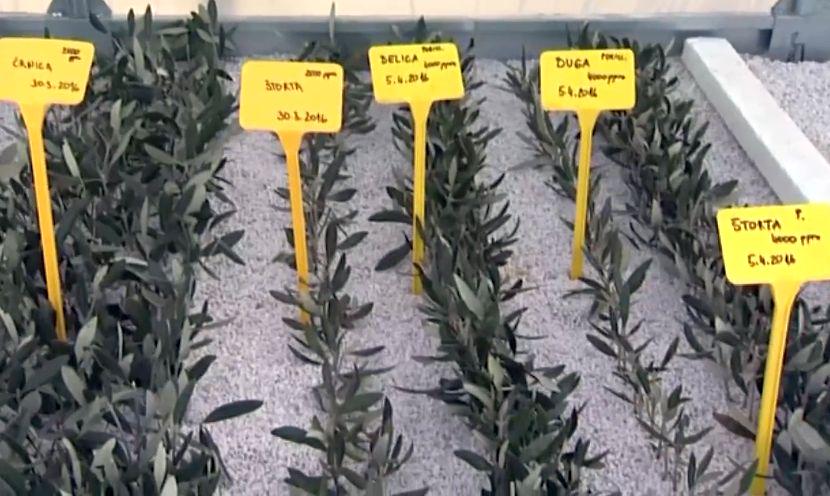
In the hotbed cuttings of several autochthonous olive sorts can be found, i.e. ‘belica’, ‘buga’, ‘črnica’ and ‘štorta’, which are definitely free of Xilella fastidiosa and other diseases..
"An olive tree is not like salad; it is not grown and raised for a short period of time, but for several generations, and the fear has been present. Therefore we wish to establish propagation of autochthonous sorts," Patricija Pirnat, head of production in Agraria Koper, explained.
Farmers and experts alike express misgivings about the cuttings, fearing that the olive trees grown from them will produce a small crop. "The problem occurs only where not everything was done as it should be," was the response given by Viljanka Vesel from the Agriculture and Forestry Institute Nova Gorica.
Ecological saplings became a hit
The first autochthonous and hundred-percent healthy saplings will be ready for planting in 2018. Already more and more ecological vegetable saplings are being planted, and they are a real hit. But one should not hurry with planting all of the sorts.
"Some sunshine does not mean that the temperature is suitable for planting saplings. Every plant requires different conditions – and it is definitely not the time for planting peppers, watermelons, melons, eggplants, cucumbers, tomatoes only exceptionally, but the saplings should be covered and protected, also here at the Coastal region," Pirnat says.
Salad, brassica plants, celery, parsley should be planted at this time, while the rest can wait for ten more days.
Branko Vrabec/TV Slovenija
Translated by G. K.

































































